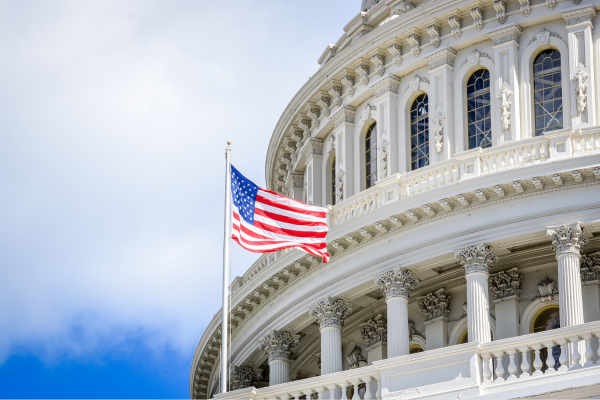
Regulatory Shifts Are Here—Is Your Overdraft Strategy Ready?
Categories:
The conversation around overdraft services has taken an unexpected turn. While regulatory change seemed imminent, recent developments at the Consumer Financial Protection Bureau (CFPB) have introduced new uncertainty. Agency leadership transitions, operational shifts, and potential rollbacks of previously announced overdraft policies underscore the need for financial institutions to stay agile and proactive in managing their overdraft programs.
The CFPB’s finalized rules for large financial institutions, expanding state-level overdraft restrictions, and evolving enforcement priorities are reshaping the future of overdraft programs. Instead of speculating on what’s next, financial institutions should focus on aligning their overdraft programs with today’s expectations—ensuring compliance, enhancing transparency, and providing a reliable financial safety net for account holders.
If your overdraft program hasn’t been reviewed recently, now is the time to evaluate compliance, disclosures, and accessibility to ensure it meets both current regulations and future expectations.
In our webinar, Overdraft Outlook 2025, we explored what’s ahead, what’s already happening, and how to turn regulatory shifts into strategic opportunities. Below, we break down the key takeaways.
What’s Changing? Regulatory Focus and Leadership Shifts
Regulatory agencies are at a turning point, but the outlook has suddenly become less clear. In a surprising move, newly appointed CFPB Acting Director Russell Vought has ordered a suspension of agency activities, putting overdraft-related rules and enforcement priorities into question. Meanwhile, Congress is considering overturning the CFPB’s December 2024 rule capping overdraft fees.
While the future of overdraft regulation remains uncertain, financial institutions should not assume that scrutiny will disappear. State-level regulations, evolving consumer expectations, and potential long-term changes at federal agencies mean that overdraft program best practices—transparency, fairness, and compliance—remain essential.
Consumer Financial Protection Bureau (CFPB) – The newly appointed CFPB acting director, upon taking the post, suspended all agency activities, raising uncertainty around the bureau’s recent enforcement priorities. The CFPB had aggressively targeted overdraft fees and opt-in practices, issuing guidance and circulars without formal rulemaking—a move that raised concerns and now faces new potential legal challenges.
Federal Deposit Insurance Corporation (FDIC) and Office of the Comptroller of the Currency (OCC) – A change in focus at these agencies may affect how overdraft-related policies are enforced. While previous guidance emphasized fees and disclosures, upcoming examinations could put greater emphasis on consumer fairness, risk management, and compliance transparency.
State-Level Regulation – Certain states, including California and New York, have already enacted more restrictive overdraft policies, and others may follow. For financial institutions operating across multiple states, staying ahead of potential state-specific mandates is crucial to maintaining compliance and service consistency.
What does this mean for financial institutions? The expectation for clear, consumer-friendly overdraft practices isn’t going away. Regulatory enforcement will continue to evolve, but this is also an opportunity to strengthen your overdraft strategy—addressing potential gaps, reinforcing compliance, and enhancing consumer trust before changes are imposed.
A Smarter Way Forward: Four Ways to Strengthen Your Overdraft Program
Instead of being reactive, you can build a stronger, future-ready overdraft program. Here’s how:
1. Align with Regulatory and Consumer Expectations
While the CFPB’s regulatory agenda is in flux, the broader trend toward fair, transparent, and consumer-friendly overdraft programs remains. Financial institutions should continue refining their overdraft services, ensuring they align with consumer expectations and industry best practices—regardless of regulatory shifts.
2. Modernize Fee Structures and Consumer-Friendly Features
Re-evaluating overdraft fees—not as a reaction, but as a strategic decision—can strengthen account holder trust and loyalty. Consider adjustments such as:
- Implementing grace periods to give account holders time to recover funds.
- Reducing or eliminating fees for small overdraft transactions.
- Ensuring clear, upfront disclosures that help consumers make informed decisions.
Even if federal oversight eases, competitive pressures and state regulations may still encourage financial institutions to modernize their overdraft programs.
3. Strengthen Compliance and Risk Mitigation Strategies
Although CFPB enforcement actions may slow in the near term, regulatory uncertainty doesn’t eliminate compliance risks. Maintaining clear documentation—especially around opt-in procedures and fee disclosures—ensures financial institutions are prepared for future regulatory shifts.
- Opt-in procedures – Ensuring account holders clearly consent to overdraft coverage to fulfill Regulation E requirements.
- Transaction processing policies – Eliminating practices that could result in unintentional or excessive fees.
- Staff training and consumer education – Making overdraft policies transparent and accessible to account holders.
4. Invest in Data-Driven Overdraft Monitoring
Leveraging real-time data tools to monitor usage patterns provides an opportunity to take action before compliance risks emerge. Ongoing program monitoring and data evaluation ensure overdraft services remain both valuable and consumer-friendly.
The Opportunity: Overdraft as a Competitive Advantage
Taking proactive steps today will help you stay ahead of regulatory changes—and better serve account holders. Success will not come from eliminating overdraft services, but from refining them to align with both consumer expectations and regulatory requirements.

Final Thoughts: Preparing for What’s Next
If recent CFPB leadership changes have proven anything, it’s that the regulatory landscape can shift unexpectedly. While some previously announced policies may be reversed, state-level regulations, legal challenges, and evolving consumer expectations still shape the future of overdraft services. Rather than reacting to each twist and turn, financial institutions should focus on building resilient, consumer-friendly overdraft programs that can withstand regulatory shifts while maintaining trust and transparency.
By taking a proactive approach—aligning with compliance expectations, evaluating fee structures, and strengthening consumer education—you can achieve long-term success.

Contact your local representative to discover ways to improve your overdraft strategy.
About ADVANTAGE, powered by JMFA
ADVANTAGE empowers community financial institutions with strategic solutions to drive growth and success. Our comprehensive services include overdraft program compliance, account acquisition strategies, contract negotiation expertise, and technology strategy consulting.
Want to stay connected with our latest insights? Subscribe by visiting advantage-fi.com/newsletter.





